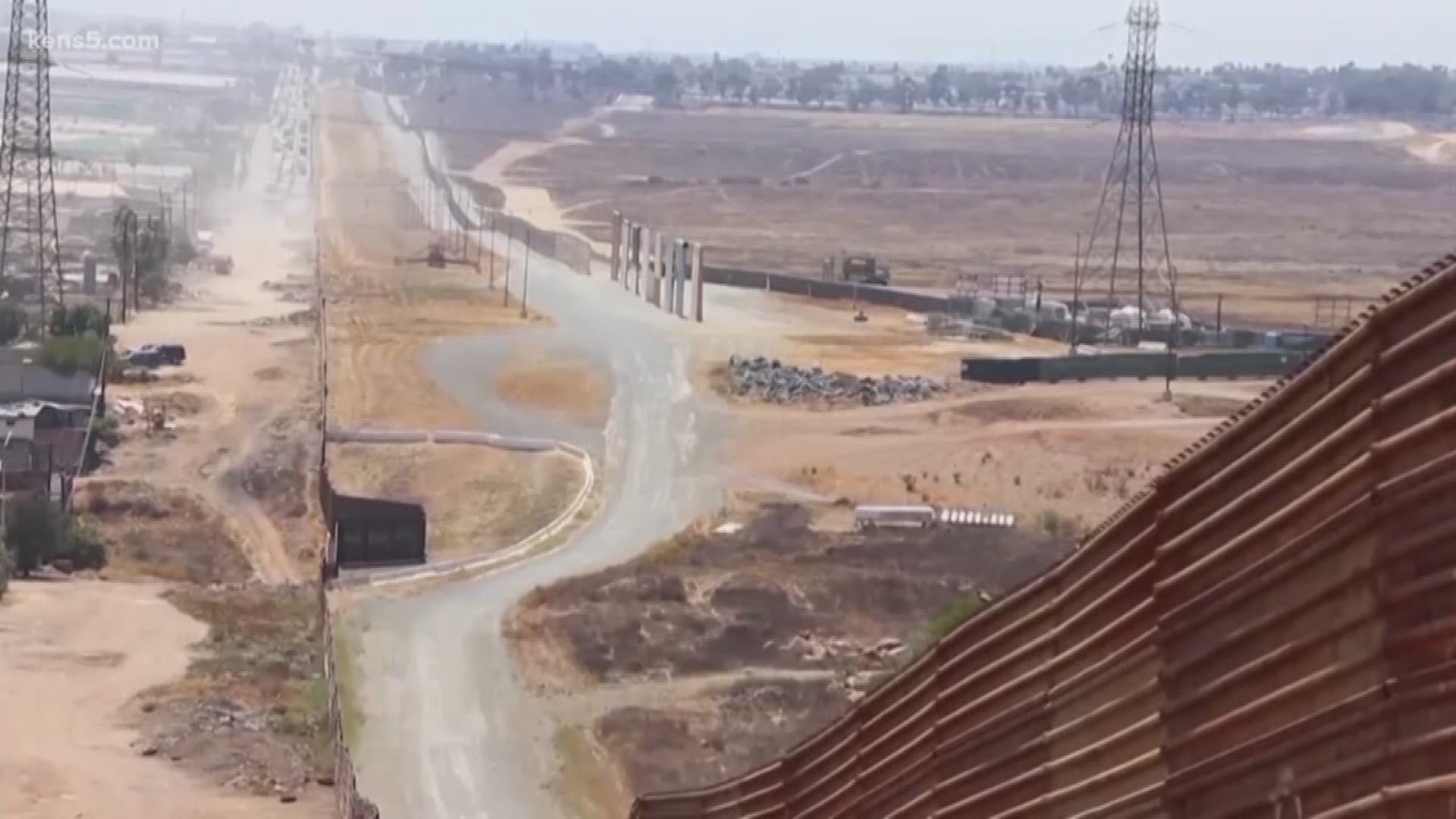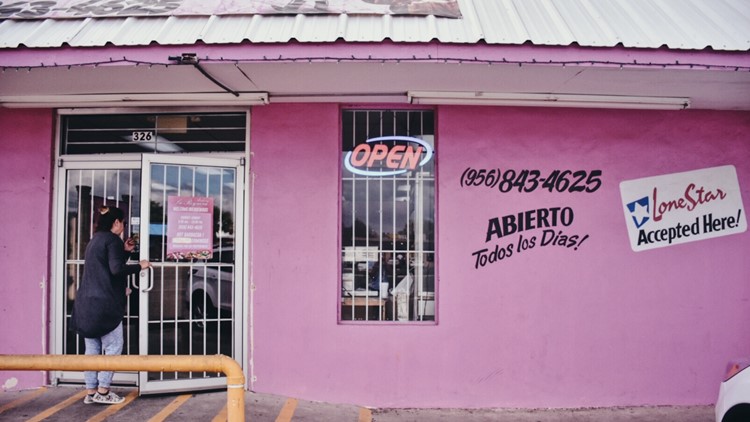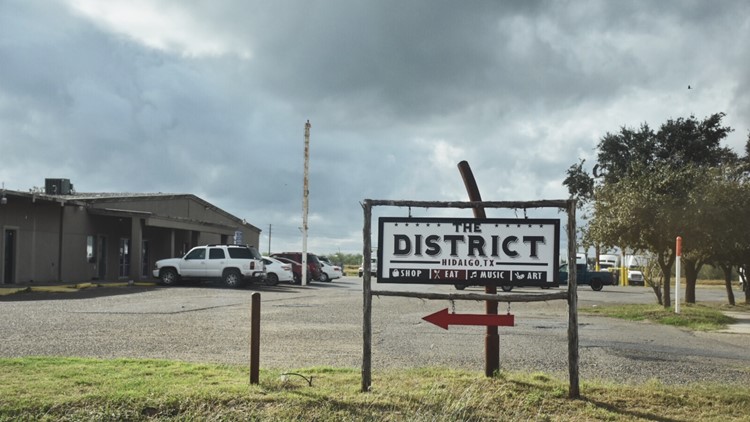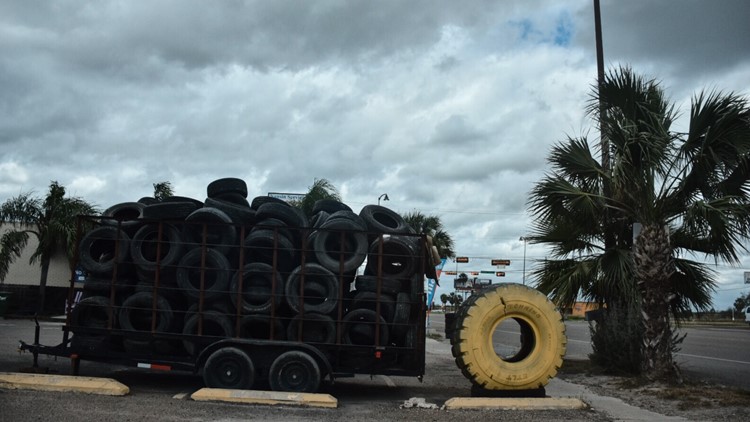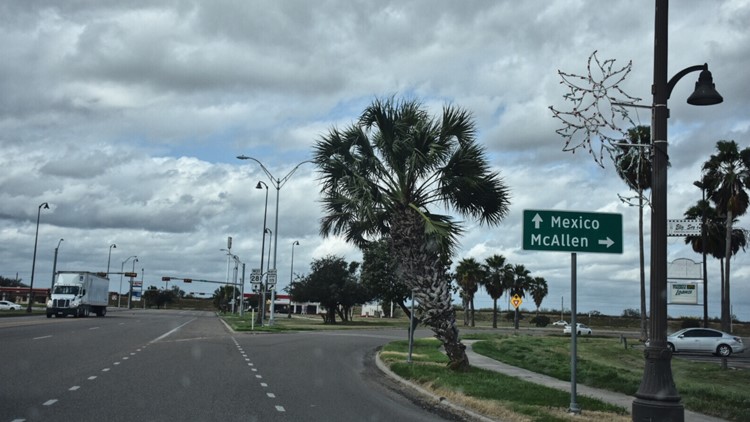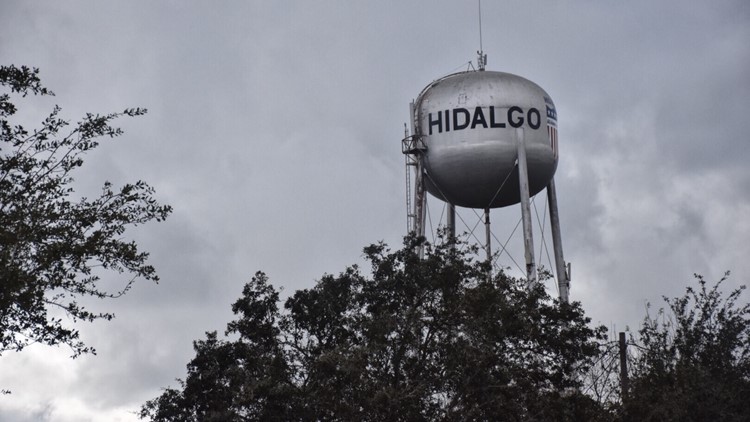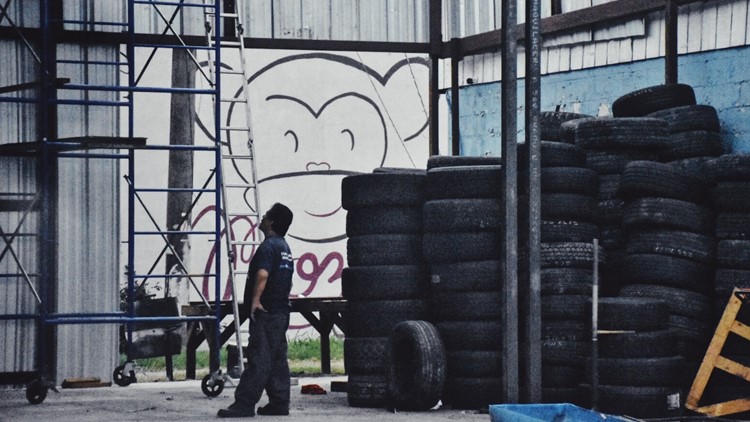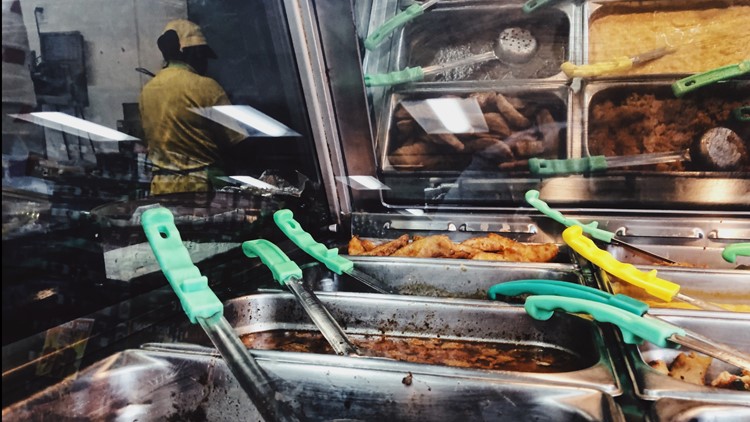The eyes of a country turned to McAllen, Texas, on Thursday, a borderland city in the heart of the Rio Grande Valley where President Donald Trump arrived for a few hours to visit with local authorities amid hundreds of protesters and supporters. The main topic on the agenda during his brief visit: Border security, and pushing for his divisive wall proposal.
To those who live there and also those reading about the visit from across the country, it is indeed a border community. But if it’s the entry into the United States, Hidalgo is the doormat.
About seven miles south of McAllen, this much smaller community is home to some of the southernmost U.S. residents in Texas. Gas is as low as $1.65 (at least it was on the day after the president’s visit), and you can see the steel bollards and slats driving down most of its main streets.
Neighborhoods sit only one to two miles from the border itself; in San Antonio, it would take you as long, if not longer, to walk from Hemisfair to the Pearl.
Gas stations, some of them abandoned, sit yards away from border bollards, as do casas de cambio, or currency exchange bureaus.
Here, the RGV denizens who live closest to their nation's gates say misconceptions from all over the U.S. of their community and the area in which it resides, especially from those who have never visited for themselves, are just a fact of life.
“Here there aren’t murders. Here there aren’t drugs. Here there aren’t gangs,” said Gilda Bargaz, a 25-year resident of Hidalgo. “Here it’s a very peaceful city. I think those who think things that are contrarian to our lives here probably are conditioned to think that way.”
Hidalgo isn’t secluded. Only 62 percent of households have internet (compared to 76 percent in McAllen just a couple miles up 10th Street), but it’s by no means a bubble. Its residents are well aware of what people say about border towns; they read, watch and listen to it every day.
To most of them here, the amount of what they call misinformation correlates with those who have never seen the area for their own eyes. But it doesn’t affect their day-to-day lives, either.
“Calm. Secure. It’s really…you go with the flow,” said 20-year-old Frank Galvan, who said he has lived in Hidalgo since he was 3. “For the Christmas parade we do here every year, we get lots and lots of visitors from all over the valley. We have winter Texans who come here, they feel safe. They’re from up north and they come down here for the winter.”
PHOTOS: Hidalgo, the Rio Grande Valley's doormat to the U.S.
When Eric Orduño moved here a little over five years ago, it was a bit of a drastic change. He came with his wife to Hidalgo, a community of just under 14,000 as of 2017, from the country’s fourth largest city in Houston.
Not long after, they opened La Reynera Bakery. Much like the shops in downtown McAllen, he said his bakery gets lots of business from Mexican consumers. Buses passing between the border and deeper into the heart of the Rio Grande Valley tend to stop near his shop, which leads to good exposure and longer lines at the counter.
Orduño called the community a tight-knit one.
“Everybody knows each other,” Orduño said. “Believe it or not, there’s not much crime. You see almost no graffiti here. The police patrol very well and they take care of the city. As long as you’re within the speed limit, you’re fine.”
While the Hidalgo Police Department couldn’t immediately provide stats on crime, McAllen officers have worked hard to decrease crime every year between 2011 and 2017, according to annual reports from MPD. Overall crime has dropped by 32 percent over that span.
Residents all over the valley said, from their experience, it’s a different story in Reynosa just across the border. Yazmin Ayala, who helps manage El Taco Bravo, said proof of violence from the town’s neighbor to the south is routinely evident.
“We hear gunfire from there all the time here, from just across the border,” she said, while also adding a contrarian opinion to what should be done in her backyard. “I think they should build the wall.”
She said it isn’t because she feels endangered; it’s to keep illegal migrants out.
“The migrants come here and think they can take our jobs,” she said.
It’s a rare pro-Trump wall take here in Hidalgo, with another resident who lives just a couple blocks away from Ayala's restaurant saying the city and its inhabitants are “pretty down-to-earth.”
“I’ve gone out at night and come home, nothing happens,” he said. “If people came down here and chilled with people, they’d find out it’s not so bad. It’s not like the misconceptions that they paint of border towns. It’s very different.”
Orduño echoed the sentiment, adding he thinks people would be surprised if they experienced the Rio Grande Valley and Hidalgo in person.
“Some people have opinions about things they really don’t know about. Unless you know what you’re talking about…you have to live and be there, not just drive through or have seen it one time,” he said.
Marta Hernandez, who was raised in Hidalgo and still lives there, said she believes there are more urgent needs for the region than a wall. The Trump administration has estimated that the project would cost $5.7 billion.
That number, she said, doesn’t sit well with her.
“Why make a wall to the sky when they can just enter underground?” she asked. “When the president came, it was only to satisfy his base I think."
As far as those illegally crossing the border nearby, those in Hidalgo say they don’t necessarily feel endangered by them. Bargaz said that, from what she’s seen personally, it’s primarily women and children.
In her mind, those who come with the intent to do evil in the U.S. get here legally. Some of her neighbors had a similar mindset.
Bargaz did offer up an idea for something she’d like to see at the border.
“Don’t get us a wall,” she said. “Get us a bridge, because the lines of people legally crossing can get so long.”

